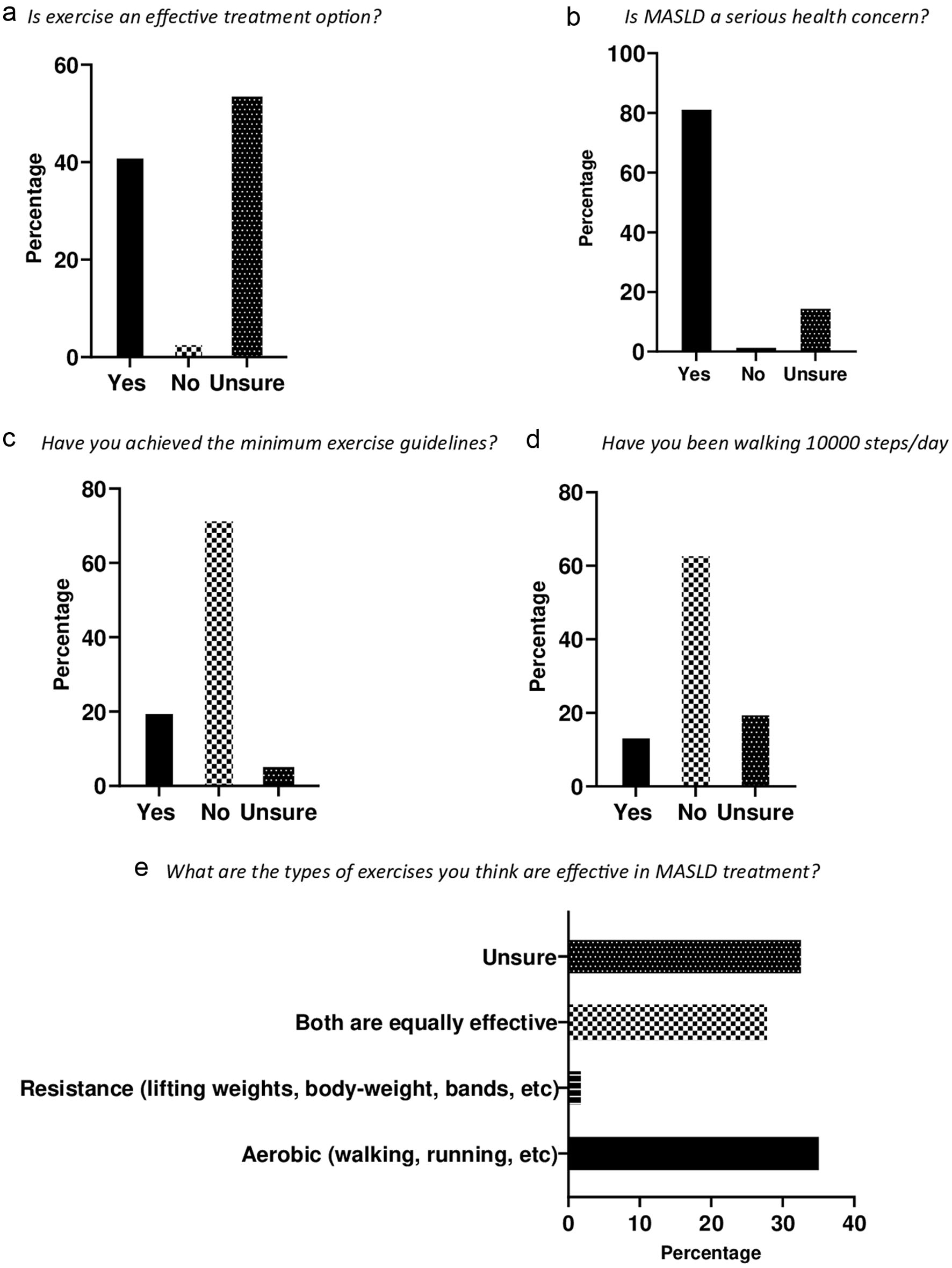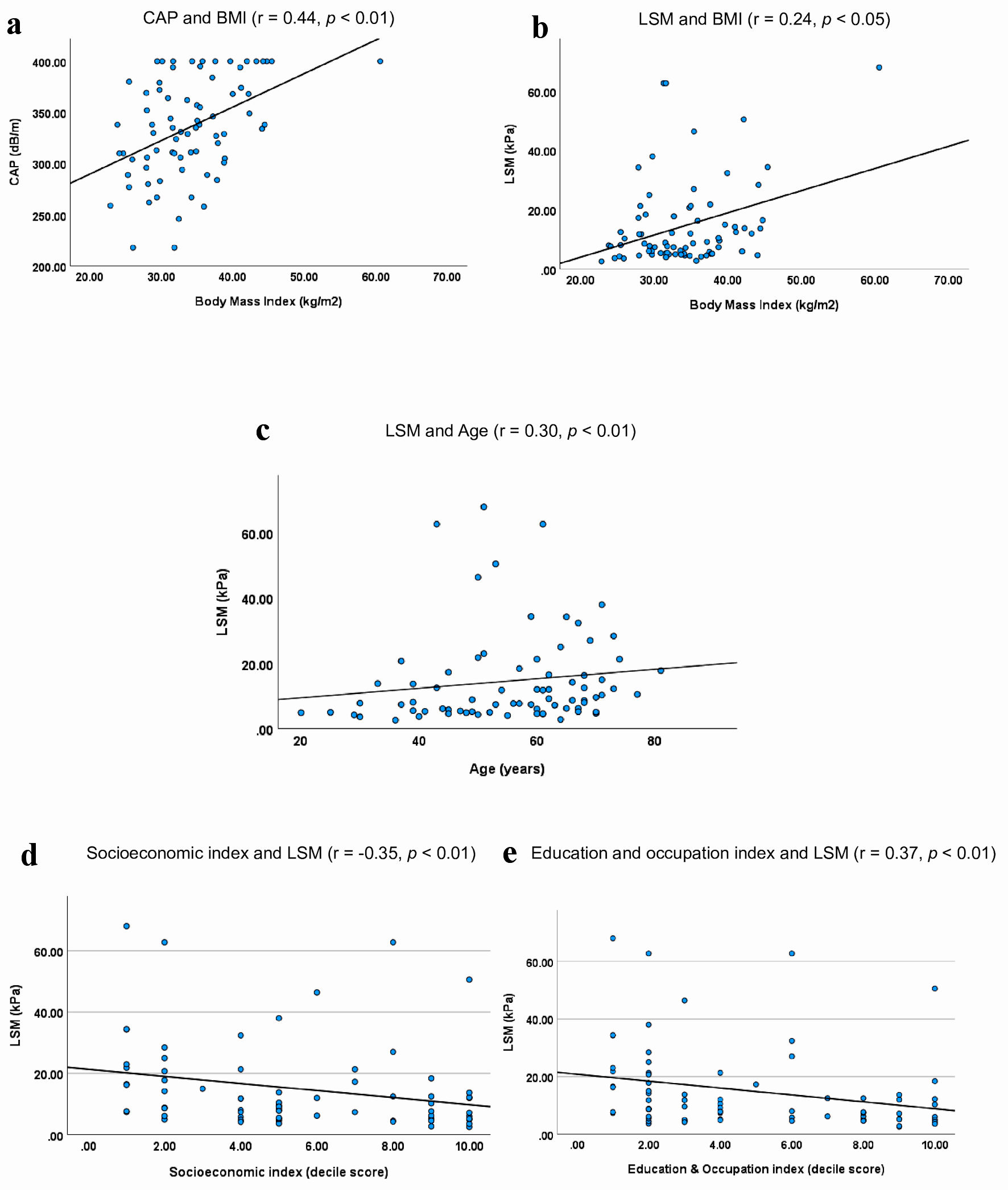
Figure 1. Perceptions, awareness and exercise behaviors. (a) More than half (54%) of the participants were unsure about exercise as a therapeutic option for MASLD. (b) Majority of the participants (83%) agreed that fatty liver is a serious health concern. (c) Majority of the participants (73%) did not achieve the recommended exercise guidelines. (d) Sixty-four percent of the participants did not walk at least 10,000 steps per day. (e) Aerobic exercise was picked as the most effective exercise (36%), and 28% thought that both aerobic and resistance exercise were effective in MASLD therapy. However, a noteworthy proportion (36%) were unsure about the optimal exercise type for MASLD therapy. MASLD: metabolic dysfunction-associated steatotic liver disease.

Figure 2. Correlations of CAP and LSM with age, BMI, socioeconomic and education and occupation indices. (a). Participants with high BMI had high CAP scores (r = 0.44, P < 0.01). (b) Participants with high BMI also appeared to have elevated LSM scores (r = 0.24, P < 0.05). (c) Older participants appeared to have higher LSMs (r = 0.30, P < 0.01). (d) LSM was inversely correlated with the socioeconomic status of the participants (r = -0.35, P < 0.01). (e) LSM was inversely correlated with the education and occupation indices of participants (r = -0.35, P < 0.01). Decile scores: 1 - most disadvantaged, 5 - average, 10 - most advantaged. CAP: controlled attenuation parameter; LSM: liver stiffness measurement; BMI: body mass index.

Figure 3. Socioeconomic, education and occupation indices for all participants. (a) Socioeconomic index. The socioeconomic status of participants did not differ significantly and was evenly distributed across most-advantaged and most-disadvantaged regions. (b) Education and occupation index. The number of participants residing in the low decile score regions (55% in decile 2) exceeded those in the high or above-average decile score regions based on their education and occupation index.


